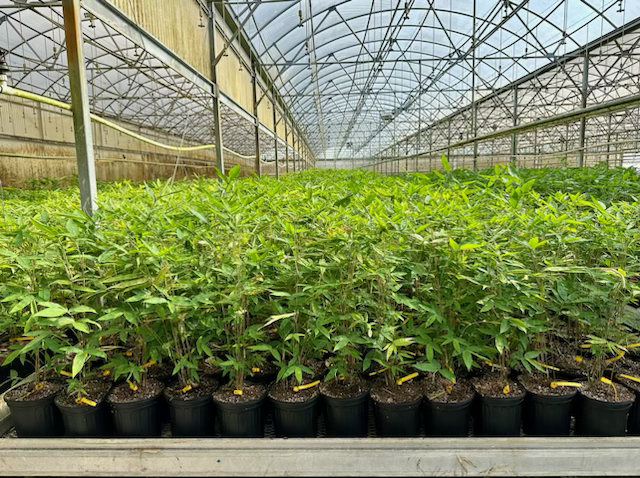Growing Beyond the Familiar to Explore Nontraditional Crops
by REBEKAH PIERCE
Florida is perhaps best known for the expansive acres of citrus groves that once stretched across the state. But the state’s crops aren’t limited to citrus, and that’s something Florida growers are proving by investing in a wide variety of emerging crops, including eucalyptus, bamboo, artichokes, peaches, and blackberries.

Eucalyptus: More Than Just a Pretty Tree
At Phillip Rucks Citrus Nursery, eucalyptus has become a staple. Owner Phillip Rucks has been propagating eucalyptus for more than 20 years, growing it for multiple markets. Currently, it’s used as biofuel, a landscaping plant, a windbreak, and even as timber. It can be grown from seed, cutting, or tissue culture.
He got into eucalyptus out of necessity.
“We had to become innovative in pursuing nontraditional crops due to new pests and diseases decimating our traditional crops,” he says. “Various factors such as climate, economic returns, and marketability determined [our] selection of crops to pursue.”
Eucalyptus, native to Australia, may seem like an odd fit nestled among Florida’s strawberry fields and cattle ranches. Yet Rucks emphasizes that Central Florida is actually the perfect spot.
“Many eucalyptus species can be grown in Florida, with the exception of North Florida due to a lack of cold-hardiness.”
He remarks on the exceptional hardiness of certain varieties, like the Corymbia torelliana, which on his own property has survived three hurricanes. Not only did the trees make it through unscathed but they also served as a windbreak to protect nearby structures.
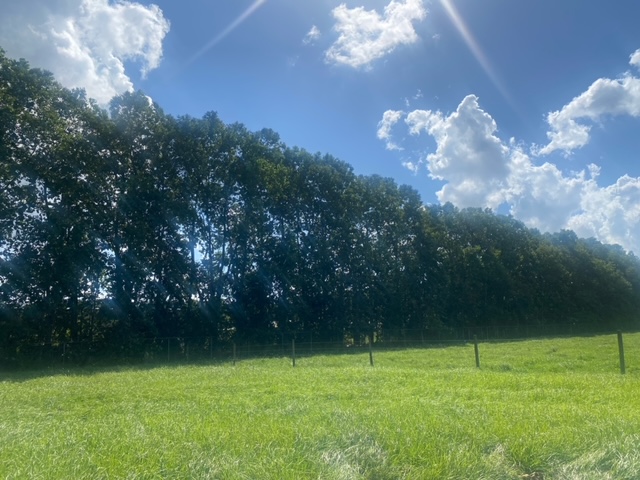
“There is not a negative or challenging issue that I can state about these trees except that they do not receive enough recognition for all they have to offer,” Rucks adds.
In Plant City, growers at Waters Edge Tree Nursery have been cultivating these trees for 10 years. Here, they’re prized for their beauty as well as their fast growth rate, shooting up about three to six feet per year.
According to owner Candice Waters, “The soil conditions for the rainbow eucalyptus are great here in Florida, but the climate can be tricky. I usually don’t sell to anyone north of Tampa because of the colder temperatures.”
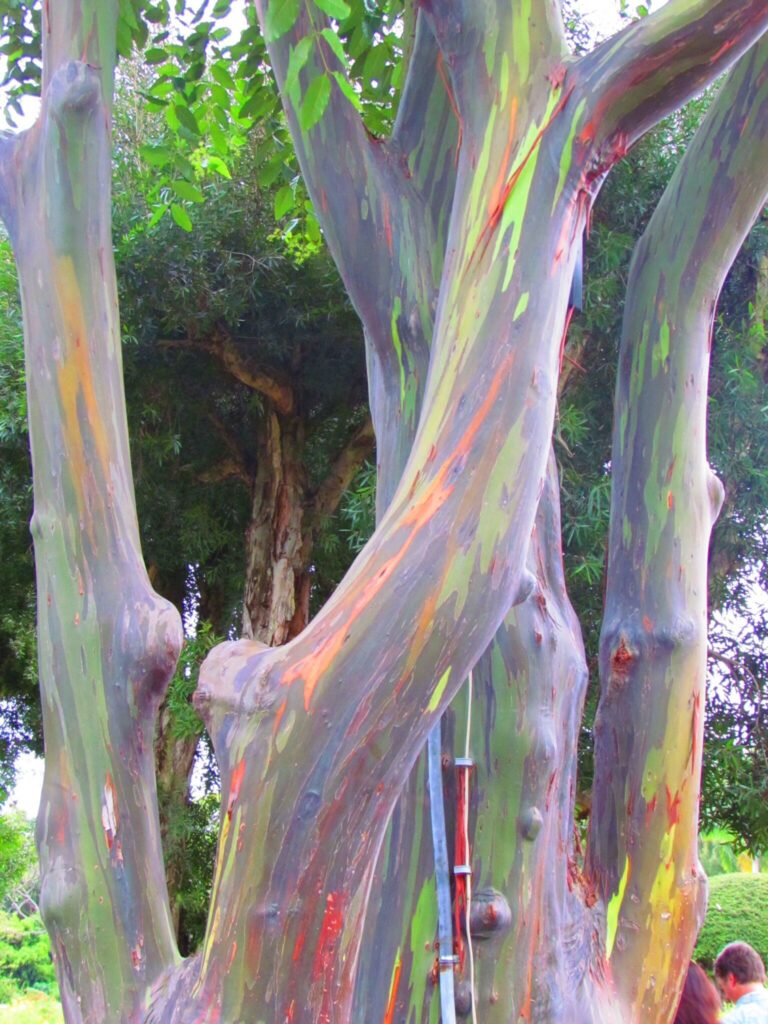
Rainbow eucalyptus, a striking tree with telltale colorful bark, is the specialty on tap at Waters Edge.
Despite their rugged beauty, Waters says they are not tolerant of frosts.
“Temperature, humidity, and airflow all have a considerable influence on how distinct the coloration of the tannins in the tree bark will be.” With dedication, however, the tree thrives.
“If the customer pays attention to the tree and takes special care and precautions, they will have a beautiful tree for almost 100 years.”
Temperature issues aside, the biggest challenge in growing eucalyptus is finding enough room for it. Rucks recommends at least eight feet of space between most types of eucalyptus to avoid overcrowding it.
Other than, he says, just make sure you spend some time with existing operations that can help you clear up any confusion you might have about how to grow eucalyptus in the Sunshine State.
Artichokes: A Mediterranean Marvel
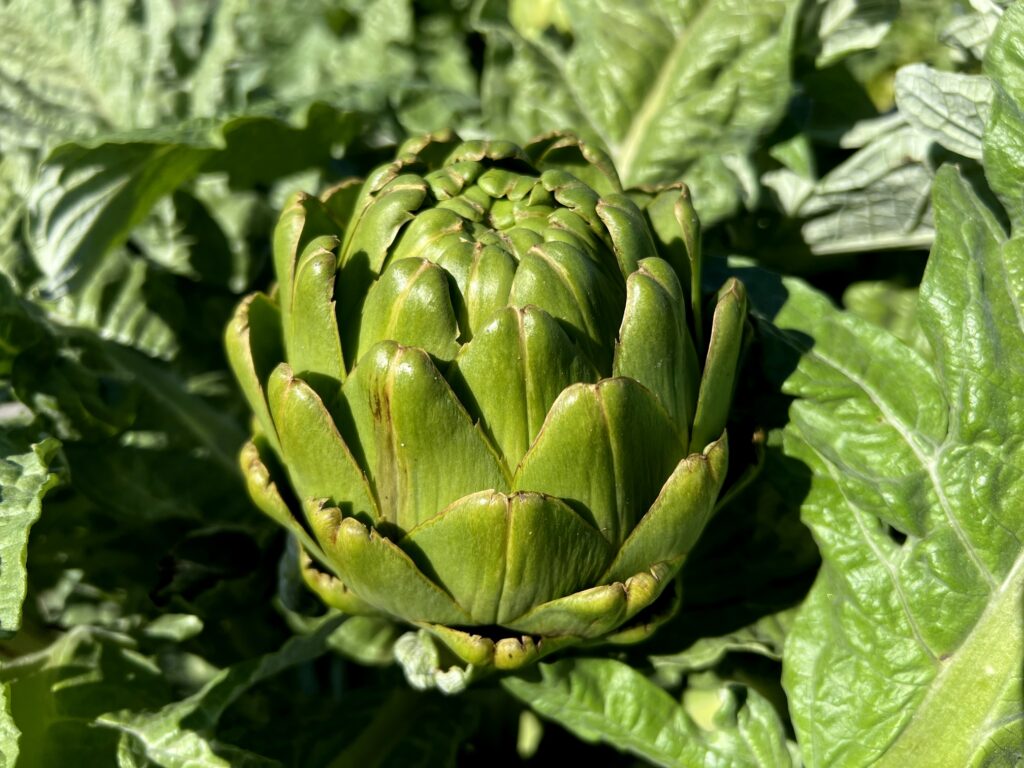
Speaking of clearing up any confusion, that’s something Shinshuke Agehara at the University of Florida is working hard to do. He’s a researcher who specializes in studying the cultivation of artichokes and hops in Central Florida, particularly in how these crops adapt to changing environments.
Originally from Japan, Agehara studied plant stress physiology and soil fertility and is now an associate professor in plant physiology. “As part of my program, I study adaptation strategies for selected alternative crops in Florida.”
He picked artichokes and hops because they’re both high-value crops that are not commonly grown. “Artichokes,” he says by way of example, “are grown only in California. The demand for artichokes is not particularly high in Florida, but they can be found in any grocery store.” Here, they’re produced primarily for the fresh market, but some artichokes are processed, canned, or used in dietary supplements.
Agehara has been in contact with multiple growers who are paving the way for successful commercial artichoke cultivation in Florida, including Parkesdale Farms in Plant City and Fancy Farms in Lakeland, both of which are starting with small field trials of the plant.
There are certain challenges associated with growing artichokes in Florida. “They’re adapted to a Mediterranean climate with a cool winter,” he says. “They have chilling requirements to induce the flowering requirements, which means that they do not produce flower buds in Florida’s warm climate.”
The problem is that it’s the bud that’s the part of the plant we harvest and eat.
The good news is that this process can be induced artificially by spraying plants with gibberellic acid. Agehara’s initial studies have focused on how to induce bud development using this chemical, and looked at ways to optimize its use.
So why bother at all with this laborious process, especially when the demand for artichokes isn’t all that high?
“The main advantage of growing artichokes in Florida is that we can harvest [them] during the winter months, when the market price is high (especially in January to February). They grow faster in Florida than in California because of our warm climate, which can reduce production costs.”
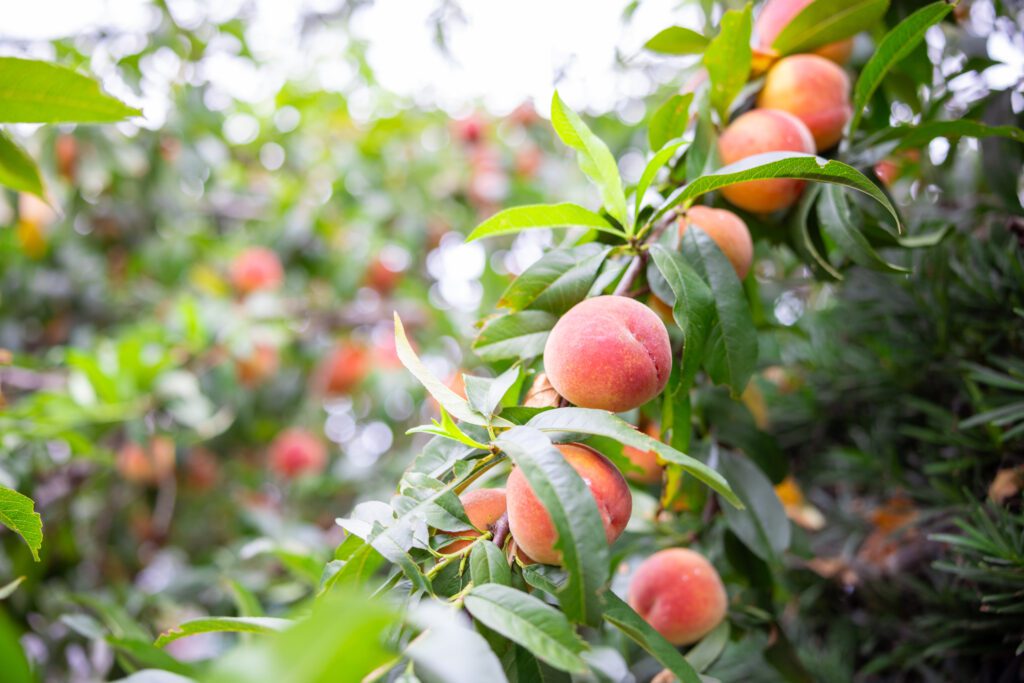
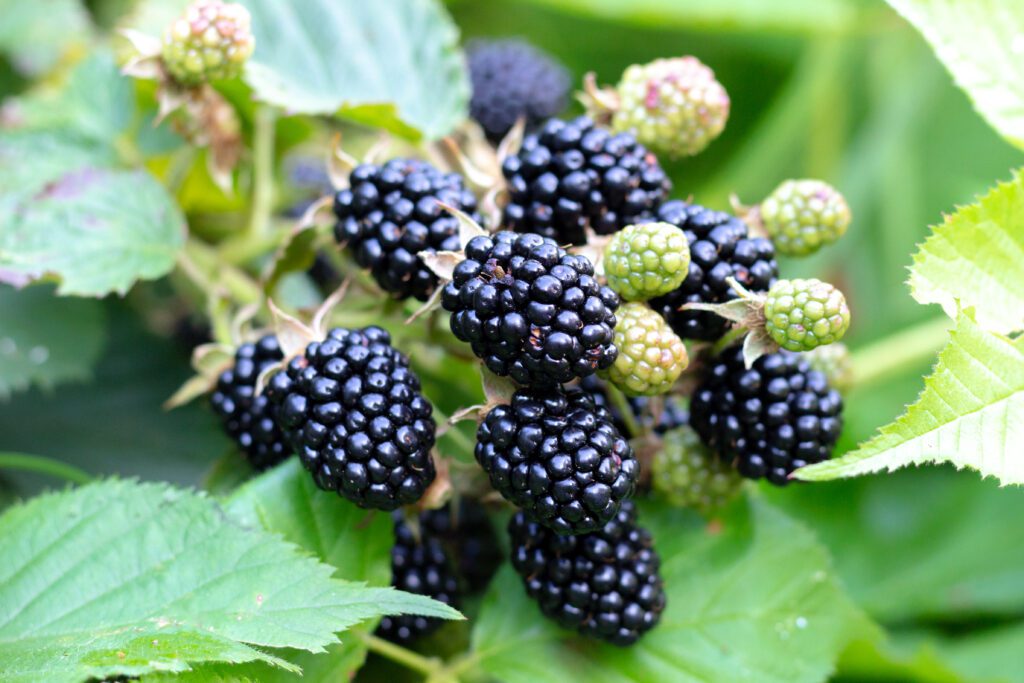
Peaches and Blackberries: A Sweet Surprise
Production costs are a major driver when it comes to another Florida farm — Graham Farms in Umatilla. Mary Graham, who grows peaches and blackberries with her husband, Michael, and her children, Zachary Graham and Margeaux Jansky, says they started growing peaches after visiting a friend’s greenhouse.
“We were impressed at how quickly they came together for a crop,” she says, and they decided to put in a test plot.
But “test” plot means something different to the Grahams than it probably does for the rest of us. Instead of starting with just a few trees, the Grahams planted 300 trees to start with in the first year. “Go big or go home,” she laughs.
The Grahams had their first crop in just the second year of cultivating these fast-growing trees. Mary put up a Facebook post and invited community members to come pick peaches, something that quickly turned into a thriving u-pick enterprise.
They aren’t planning on slowing down any time soon, either. They are working on planting more peach trees and have found that both the climate and soil of Florida are perfect for growing peaches.
That’s not to say it’s been all sunshine and roses.
“It’s been a huge learning curve,” Graham says. “[Peaches] will grow like weeds if properly managed and maintained, [but they’re] very labor intensive.” They require lots of water, lots of fertilizer, lots of pruning and thinning, and most importantly, lots of attention.
There are several pests that plague peaches in Florida, such as ambrosia beetles (which killed 70 trees within a week during one growing season on Graham Farms), the peach borer, and San Jose scale. Possums, deer, and even bears can also be problematic thieves.
Blackberries are the other alternative crop the Grahams started growing about eight years ago, despite repeating the mantra “we will never do blackberries” for years prior. Ready for harvest at roughly the same time as peaches, these tiny fruits have been yet another super-sweet success story at Graham Farms.
When it comes to growing these unique crops, Graham has one piece of advice: pay attention.
“They’re very high maintenance,” she says specifically of peaches. “They’re difficult to do organic, and expensive to do organic.” That’s not to say that it can’t be done, but you’ll want to be vigilant when it comes to the health of your plants.
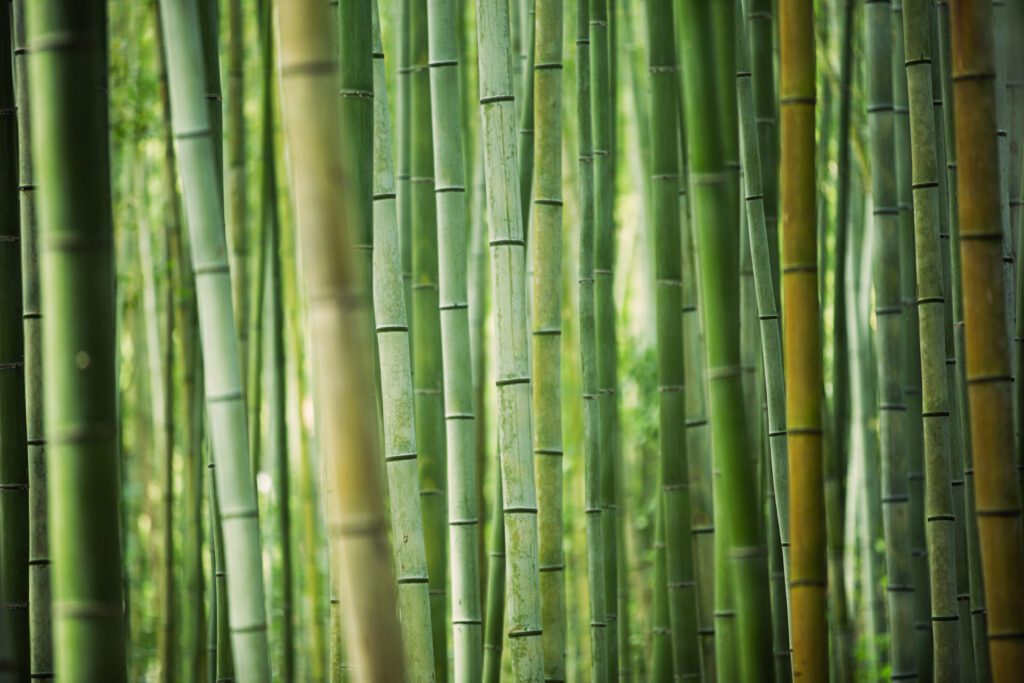
Bamboo: A Green Gold
Bamboo is yet another alternative crop that’s being pursued in Florida. Rucks has been growing bamboo for about six years.
The biggest hurdle in growing Florida bamboo has been a logistical one.
“There are 1,000 species of bamboo with two classifications,” he says. “Clumping varieties (which are noninvasive) and running varieties (which are invasive and illegal to plant in Florida.”
This confusion has been challenging for Rucks, who cites a lack of information as problematic in growing this specialty crop. He’s working hard to overcome that; the nursery is now cooperating with UF/IFAS in a trial program.
“There’s no published literature for bamboo production in Florida,” says Rucks, who is currently growing a five-acre bamboo block to evaluate spacing, water usage, and different varieties.
It sounds like a lot of hard work — and it is — but bamboo has multiple environmental benefits. According to Rucks, it’s the highest carbon-sequestration plant on Earth and it can help remediate the soil.
It also has commercial value: In addition to being an important source of biochar, it serves as a source of timber for building materials. It can also be used in bed sheets, clothing, utensils, toilet paper, and much more.
When it comes to growing these alternative crops, knowledge is power. Rucks and others interviewed for this story highlight the importance of individual research and trial and error.
“We are dedicated to perfecting alternative crops,” Rucks says.

